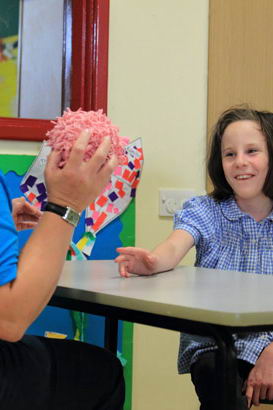
For many years, education researchers have sought to identify and understand why some schools produce better educational
outcomes than others. For example, what particular school and classroom factors are at play?
Research on teaching and classroom practice has consistently identified that the extent of student engagement in learning
is a significant factor.
The extent of academic engagement is more than simply a measure of time on task. It is a broader concept that refers to the
intensity and emotional quality of the learner's involvement in the learning activity.

In recent years, the concept of engagement has been expanded from simply what children are doing to how
they are doing it. In this way, the concept of engagement progresses from considering only the quantity of time spent
engaged, to encompassing multiple dimensions of the quality of engagement.
Ruble and Robson, 2007
A focus on engagement can underpin a process of personalised inquiry through which the educator can develop effective learning
experiences. Using evidence-based knowledge of a child's successful learning pathways, strategies can be identified, high
expectations set, and incremental progress recorded on their journey towards optimal engagement in learning. Their engagement
will be the benchmark for assessing whether we have achieved this goal.
Carpenter, 2010
Engagement is difficult to define operationally, but we know it when we see it, and we know when it is missing.
Newman, 1986
Like all children, those with CLDD and SEND learn through engagement.
The population of children in our schools with CLDD has
increased. Between 2004 and 2008 there was a 5.1% increase in children with SLD,
and a 29.7% increase in those with PMLD.
(Department for Children, Schools and Families, 2010)
In this clip, Barry Carpenter expands on this point at The Schools Network Annual Conference.

Carpenter, B. (2010) Children with Complex Learning Difficulties and Disabilities: Who are they and what are their
needs? (Complex needs series) London: SSAT
Department for Children, Schools and Families (2010) Salt Review: Independent review of teacher supply for pupils with
severe, profound and multiple learning difficulties, Annesley: DCSF Publications.
Newmann, F. (1986) Priorities for the future: Toward a common agenda, Social
Education, 50(4): 240-250.
Ruble and Robson (2007) Individual and Environment Determinants of Engagement in Autism, Journal of Autism and Developmental
Disorders, 37: 1457-1468.
